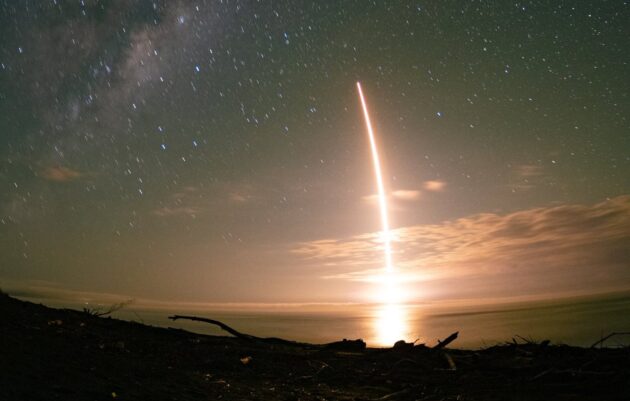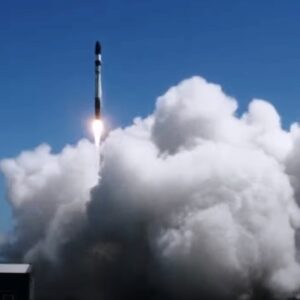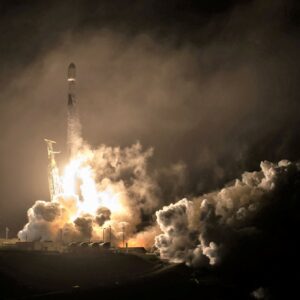
Thanks to its role in handling pre-launch logistics, Seattle-based Spaceflight Inc. can claim a share of the credit for two successful satellite deployments that took place within 24 hours this week — but it’s also facing a rift in relations with SpaceX, one of its longtime launch partners.
First, about the successes: On Friday, SpaceX launched 40 satellites from Cape Canaveral Space Force Station in Florida on a Falcon 9 rocket, as part of a mission known as Transporter-4. Spaceflight Inc. handled the arrangements for flying several of those satellites.
Spaceflight also played a supporting role in today’s launch of a Rocket Lab Electron rocket from New Zealand’s Mahia Peninsula. Two Earth observation satellites were successfully sent into orbit for BlackSky, a Virginia company that was once Spaceflight’s corporate sibling and still has a significant workforce based in Seattle.
Spaceflight Inc.’s role and the Seattle angle were recognized in Rocket Lab’s mission patch for the launch, which includes the Space Needle in its design.
“Thanks for another great launch day!” Spaceflight told Rocket Lab in a tweet.
In contrast, Spaceflight’s interactions with SpaceX have become less cordial and more complicated over the past few months.
Spaceflight’s business model relies on purchasing excess capacity from launch providers around the globe — and it’s been making deals with SpaceX for rideshare satellite launches since 2015. One of the biggest highlights came in 2018, when Spaceflight Inc. bought the entire capacity on a SpaceX Falcon 9 to put 64 satellites in orbit. Spaceflight also played a role in SpaceX’s Transporter-1 and Transporter-2 missions last year.
Then the relationship hit a snag, due to problems involving Spaceflight’s Sherpa orbital transfer vehicle.
Sherpa spacecraft are designed to separate from a launch vehicle and deploy multiple satellites into different orbits. They’ve been used successfully on multiple SpaceX flights. But during the run-up to SpaceX’s Transporter-3 launch in January, Spaceflight’s Sherpa-LTC1 suffered a problem with its propulsion system and was removed from the mission. As a result, both Spaceflight Inc. and SpaceX had to scramble to rearrange their satellite launch schedules.
Spaceflight was also planning to fly a Sherpa orbital tug on this week’s Transporter-4 mission, but said it was told by SpaceX that its Sherpa-FX5 was taken off the manifest “due to concerns about the test levels for customer spacecraft installed on Sherpa.” That set off another scramble.
“Some have speculated that Sherpa failed a vibration test, and that is not the case,” Jodi Sorensen, Spaceflight’s vice president of marketing, said in a blog post. “The vibration test was 100% successful, with no failures observed with Sherpa post-test.”
The relationship suffered a further blow when Space News reported that SpaceX sent an email to its satellite rideshare customers, telling them that “we will no longer be flying or working with Spaceflight Industries after currently manifested missions.”
Spaceflight’s president and CEO, Curt Blake, said he was “surprised and disappointed” by SpaceX’s decision.
“We will continue to work with them on our current missions as planned, and hope to work with SpaceX again in the future,” Blake was quoted as saying in Sorensen’s blog post. “We are simultaneously accelerating alternate launch options via our large network of launch providers to serve our customers’ needs, including more Sherpa missions.”
SpaceX hasn’t commented publicly about the rift.
In a follow-up statement emailed to GeekWire, Spaceflight said it’s moving forward with all of the Falcon 9 missions it currently has on its schedule, including multiple Sherpa missions planned for this year as well as a GEO Pathfinder mission that’s due to go around the moon next year.
The company also said it’s trying to resolve the deeper issues.
“The Spaceflight and SpaceX technical teams continue to work closely together to ensure a smooth and successful integration and launch experience for customers,” Spaceflight said. “We’re continuing efforts on all fronts to address the situation and understand how we can work together in the future.”





